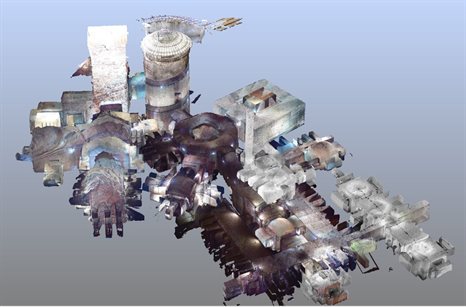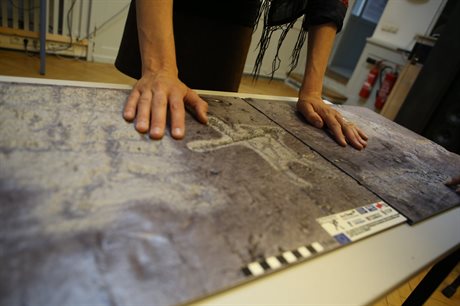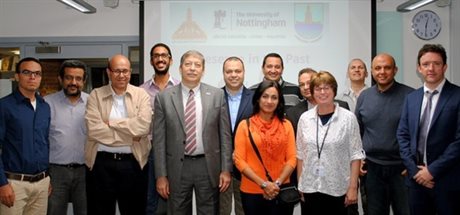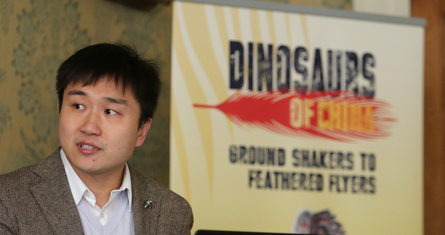Cultural Heritage
Cultural Heritage (CH) has become very high tech in the last decade, and the addition of 3D scanning and virtual models of CH sites and artefacts has introduced a whole range of new research questions relating to human-computer interaction and usability.
HFRG have been involved in cultural heritage projects since 2012. These have focused on digital capture and preservation of archaeological sites for presentation to a variety of audiences for scientific enquiry, education and public engagement.
Working with archaeologists in Italy, Greece and Egypt, and partners from other disciplines in Germany, Austria and the UK, our role has included working with stakeholder groups to establish user needs and requirements, formative user evaluation of technology prototypes, design of 3D interactive virtual environment content, and the development and evaluation of user interfaces for research, public engagement and educational use.
As members of a network of CH experts both internationally and within the University of Nottingham, we are working towards future CH projects and also considering the application of HF expertise in other domains combining scientific research and technology with education and public outreach, such as paleontology and astronomy.
Projects
Title: VirCult
Funder: Tempus EU
Total value: €1 million
Start to end date: November 2012 – October 2016
Summary:
The primary objective of VirCult is to enhance Egyptian cultural heritage education by allowing students to explore highly detailed models of sites of historic significance from key periods of Egypt’s history. Some cultural and personal issues prevent students from undertaking field visits (a notable example is when a female is not permitted by her family to travel). VirCult will enhance the educational experience for these students by constructing accurate 3D models of the sites which students can explore an interact with. The use of a Virtual Environment allows not only virtual presence and experiential learning, but also the opportunity to augment the experience by linking to online libraries, resources, site plans and media to enrich learning. This project has the potential to produce a new generation of archaeologists with a deeper understanding Egypt’s cultural heritage, which is among the largest and most ancient worldwide.
Project partners:
- Democritus University of Thrace (Greece)
- Universita Di Catania, Italy
- Ministry of State for Antiquities Affairs, Egypt
- Ain Shams University
- Alexandria University
- Alexandrina Bibliotheca
- La Societe Archeologique D’Alexandrie
- Damanhour University, Egypt
- Nile University, Egypt
- South Valley University, Egypt
Tempus ViRCult project
ASU-GARDS

3D-Pitoti: 3D acquisition, processing and presentation of prehistoric European rock-art
Title: 3D-Pitoti: 3D acquisition, processing and presentation of prehistoric European rock-art
Funder: European Commission Framework Programme 7 (ICT-600545)
Total value: €3,702,955
Start to end date: March 2013 – February 2016
Summary:
Valcamonica, in the Lombardy region of northern Italy, has some of the best rock art in the world. These “Pitoti” (meaning little puppet in the local dialect) are on the UNESCO list of world heritage. Tens of thousands of Pitoti images span a period from about 4000 BC into medieval times. However, the evolution of the Pitoti graphics is omitted from our standard history story. 3D-PITOTI provided the step change needed by researching and developing: an affordable and portable multi-scale 3D scanning toolkit for the high resolution acquisition of Pitoti figures and their natural context; Intelligent data processing technologies to enrich the scanned 3D data by classification, clustering and retrieval techniques; and Interactive 3D visualization and presentation techniques to provide access to the enriched high resolution digital rock-art for scientists, museum visitors and school children.
Project partners:
- St Polten University of Applied Sciences (FHSTP), Austria
- University of Cambridge (CAM), UK
- Bauhaus Universität Weimar (BUW), Germany
- Graz University of Technology (TUG), Austria
- ArcTron 3D GmbH (ArcTron), Germany
- Centro Camuno di Studi Preistorici (CCSP)
Key publications:
- Lackovic. N., Crook, C., Cobb, S., Shalloe, S. and DCruz, M. (2015). Imagining technology-enhanced learning with heritage artefacts: teacher-perceived potential of 2D and 3D heritage site visualisations. Educational research, 57 (3), 331-351. DOI:10.1080/00131881.2015.1058098
European Commision CORDIS: 3D-PITOTI project details
European Commission CORDIS: 3D-PITOTI Result In Brief

Title: Presence in the Past
Funder: British Council Newton –Mosharafa
Total value: £500,000 (UNott £250,000)
Start to end date: 2015 - 2017
Summary:
This project, building on existing collaborations between The University of Nottingham, Ain Shams and Alexandria Universities, will digitally record a range of Egyptian maritime sites, construct accurate photo-realistic 3D visualisations, and then make them available online as part of a virtual maritime research centre for a worldwide research community. It is Egypt's cultural heritage accumulated over thousands of years that gives Egypt its identity and prestige. However, only a small proportion of this resource is known to the world and major milestones in human heritage are still hidden underwater or are inaccessible to human exploration. Preservation of these hidden treasures using state-of-the-art methods in 3D digital capture and interactive visualisation will move them "into the laboratory", allowing a larger number of scientists and students from a variety of disciplines to be involved in innovative scientific exploration, eventually leading to more discoveries and global awareness of human heritage that can be transferred to next generations.
Project partners:
- Ain Shams University
- Alexandrina University
Underwater Archaeology Research Centre

Title: PARM and Pavlopetri
Funder: Heritage and the Digital Research Priority Area, The University of Nottingham
Total value: £10,000
Start to end date: 2016
Summary:
A feasibility study looking at representing 3D data from an underwater archaeological survey of the ancient Greek town of Pavlopetri, on Projected Augmented Relief Models (PARM). The data had previously been used in a digital 3D reconstruction of the town but no physical model had been built. PARM had previously been used to represent existing terrestrial landscapes, but not for underwater or archaeological remains. The resultant model was further augmented with tablet based reconstructions of some of the buildings of the town.
Project partners:
- Ain Shams University
- Alexandrina University
Underwater Archaeology Research Centre

Dinosaurs of China is an exclusive exhibition to Nottingham, the first in Europe, higlighting the foundation of transformed musesums in China.
Dr Wang Qi, an Assistant Professor in Architecture, who specialises in exhibition and museum design developed research since 2009 in the Natural History Museum, understanding - how is it perceived and experienced by the user - and exhibition narrative (storytelling) which, when combined, can provide an enhanced visitor and learning experience. This case study created longstanding relationships with the Palaeozoological Museum of China (PMC) and the Institute of Vertebrate Palaeontology and Palaeoanthropology (IVPP) of China.
Through further research with PMC in 2011, Dr Wang secured agreements with PMC suggesting the museum could exhibit their dinosaur collection at Wollaton Hall, Nottingham’s local natural history museum. Thus, the Dinosaurs of China exhibition was born.
Read more, view the dinosaur gallery and watch time lapses...
Partners:

Dr Wang Qi at the Dinosaurs of China exhibit, Nottingham